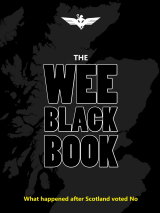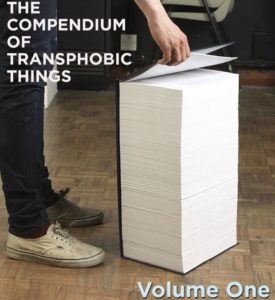The Nevada-Semipalatinsk Doctrine
Last week (Feb 28th, to be precise) marked the anniversary of the founding of arguably the most successful mass anti-nuclear protest movement the world has ever seen. We’re talking, of course, of the Nevada-Semipalatinsk Anti-Nuclear Movement, which was active between 1989 and 1991.
If – for some unaccountable reason – you haven’t heard of it, then read on, for it’s a tale of how the ordinary people of a provincial part of the former Soviet Union found that a mass protest movement, well-organised and with right on its side, forced an intransigent, distant government to concede its demands. Are there lessons for the people of Scotland in their story? Let’s find out.
In 1949, officials from the former Soviet Union began conducting above ground nuclear tests at the Semipalatinsk facility in Kazakhstan. More than three million people resided in towns and villages in the surrounding area. Despite this the first Soviet atom bomb was detonated in Kazakhstan in 1949, and in 1953 the first hydrogen bomb was also tested in the same region.
Until 1963, all of the testing was carried out above ground and created large, radioactive clouds that exploded upwards before settling over the surrounding countryside. Predictably, this resulted in a huge increase in rates of cancer and other diseases. After 1963, the tests were conducted below ground. However, on the 12th and 17th of February 1989, radioactive material leaked from the underground facility towards the residents of neighbouring areas, once again threatening their lives.
Shortly after this latter event a popular Kazakh poet, Olzhas Suleimenov, was giving a reading of his work on national television when he stopped and began, instead, to speak about how this continued nuclear testing was a grave and unacceptable threat to the health and lives of the people of the Semipalatinsk region. He then called on all concerned citizens to come together and demonstrate their disapproval.
A mere two days later, on 28th February at Alma Ata in Kazakhstan, the Nevada-Semipalatinsk Movement to Stop All Nuclear Testing was founded at a meeting held in the National Writers’ Union headquarters. An impressive 5,000 Kazakhs from a wide variety of backgrounds attended.
(The name was chosen to show solidarity with the people of Nevada in the US, which had been the site of the large Nevada Test Site anti-nuclear demonstrations and encampments outside Las Vegas in the mid-to-late 1980s.)
From the moment of its inception, the NSANM showed remarkable ambition and drive. Almost immediately, they stated that their end goal was to abolish nuclear weapons worldwide. By the end of the first meeting, they had adopted a declaration entitled ‘High Time’, which demanded:
– the closure of the Semipalatinsk facility and a cleanup of the area
– the end of nuclear weapon production
– citizen control over nuclear waste
– the creation of a map showing the extent of radiation damage in the USSR, and
– the disclosure of the plight of radiation victims in the Soviet Union.
Circulated as a petition, ‘High Time’ received over a million signatures within days. To follow it up, the group began holding regular rallies near the test sites. The largest was held on the 6th of August 1989, the anniversary of the US nuclear attack on Hiroshima, when approximately 50,000 people gathered at the foot of the Karaulnaya volcano beside Semipalatinsk, and began to throw stones and rocks at the test site.
(It should probably be explained at this point that this behaviour wasn’t an act of violence but in accordance with the ancient Kazakh tradition of throwing stones at evil.)
Whatever the reason, it certainly seems to have drawn a crowd, and the mass demonstrations continued until the 17th of November that year when the Chair of the Council of Ministers of the Soviet Union, Nikolai Ryzhkov, announced that there would be no more nuclear testing for the rest of the year.
In December 1989, Olzhas Suleimenov travelled to the United States, where he met with sympathetic US anti-nuclear groups. During his trip, the Soviet Union admitted that they had cancelled eleven out of eighteen planned nuclear tests, because of the publicity generated by the movement. Protests and demonstrations at Semipalatinsk continued and, in early 1990, in an effort to placate activists, the Soviet government promised to restrict the number of future tests at the site to 27, and to completely close down the Semipalatinsk facility by 1993. This offer was rejected by the campaigners as insufficient.
The support for the campaign was now flourishing both internationally and within Kazakhstan. After a major test explosion in October 1989, 130,000 workers at the Karaganda coal mines declared that they would go on strike if the tests continued. Following this up, in 1990, the Kazakh miners threatened again to go on strike during their contract negotiations. Chief on their list of demands was an end to nuclear testing at Semipalatinsk.
International organisations, such as Greenpeace and International Physicians for the Prevention of Nuclear War were also becoming increasingly involved. Despite this, the Soviet Government secretly conduct a test on 24th October, 1990, at Novaya Zemlya; the last nuclear test to take place in the Soviet Union.
In December of 1990, the Kazakhstan parliament passed a bill banning nuclear weapons testing in the republic. In August 1991, the President of Kazakhstan officially closed Semipalatinsk from nuclear testing. In October 1991, Mikhail Gorbachev established a yearlong moratorium on Soviet nuclear testing and, three weeks later, Boris Yeltsin banned nuclear testing in Russia for one year.
By closing Semipalatinsk, Kazakhstan and the Soviet Union became the first nation to close a nuclear test site anywhere on Earth. According to UNESCO, the Nevada-Semipalatinsk Movement played a positive role in promoting public understanding of “the necessity to fight against nuclear threats”. Kazakhstan declared itself an independent country on the 16th of December 1991.
So, what have we learned from the above? For myself, I can’t help but observe that the Nevada-Semipalatinsk Movement developed a bold and ambitious campaign that, from a standing start, quickly grew a mass movement willing to participate in direct action when they felt that their political institutions were unable or unwilling to reflect the will of the people.
The parallels between Kazakhstan in 1989 and Scotland in 2013 seem too obvious to need pointing out. Suffice to say that we too have an unwanted nuclear menace on our own doorstep that threatens millions. How are we going to respond?






















Ignorance is bliss…………..unless the truths are told.
But who does Scotland have to come forward and tell said truths?
…….as I said,’ignorance is bliss’ !
I have no idea about the last link.
I thoroughly recommend the following book to any of you that have an interest in nuclear testing.
link to amazon.co.uk
American families used to go and view the explosions by way of entertainment while the kids played in the fallout dust.
Of course, the US Government assured them that risk to health were minimal.
getting on telly in the good old days of the soviet union appears to have been easy. No one would have a snow balls chance in hell of doing the same in Scotland, the old soviet union appears to have been more demodratic than we have been led to believe
Beat me to it, Wullie.
I have family in Utah. Their community divides itself into ‘upwinders’ and ‘downwinders’.
BTW Rev, you have a 404 — oh, wait, I get it.
The reply from the ConDems and labour will be, “but what about the jobs that are created at faslane?” The answer is that these jobs can be transfared with the nukes to sunny old England! See how they like it up them, Capt Mainwarring!
RevStu, you have a link to http://www.scraptrident.org which isn’t working because there is a WoS url in the string in front of it.
I HAVE NO IDEA WHAT ETC.
“which isn’t working”
I thought the ‘not found’ error was a piece of sarcasm.
Always good to learn something new.
I’d never heard of this movement being formed and actually winning the argument.
It fair gives you hope for the future of people power.
Next time somebody says “anti-nuclear protests never change anything”… I’ll point ’em here!
I don’t see the parallels. Seems more like the protests against France detonating bombs in their Pacific territory in the 90s than Scotland. There is a gulf of difference between rape of the earth, of which the above is a good example, and possessing but not using these weapons.
To my bones I am against nuclear weaponry but this and your CND article made me wince. To the average joe the trident nukes are inert objects in a metal tube that they don’t see and consequently care little about. The expense might be a concern. The comparison is silly.
Malcolm,
Is that what you think, or just the ‘average Joe’? I am confused.
It is what evidence tells me. Faslane protests are not attended by tens of thousands.
I was only trying to clarify.
What is described in this article is historic. As are the British detonations in Australia? Were they stopped through popular struggle?
I don’t see anybody implying weapons are being set off in and around Ayrshire. It does however, seem a valid article when it tackles the illusion that the ‘average Joe’ In West Central Scotland and beyond couldn’t be less worried about those inert materials throbbing away in steel tubes that seem intent on bumping into Islands and sinking fishing boats on a statistically very unlikely basis.
Sorry, I am sounding awful flippant here Malcolm, but I just want these filthy weapons away from the Scots, our country and our future. If Scots had (had) access to even the most basics of Democracy over the last 50 years, we would not be having this conversation, as the things would have been gone already.
Also, your argument sounds very familiar to the, ” I just don’t get asked on the doorstep about our policies on… nuclear weapons… Devolution….Independence…..The Constitution…..House of Lords Reform…… Proportional representation…..etc. etc.”
Do you believe no one gives a damn about these issues and so they need not be considered and tackled?
If Scotland votes YES in 2014 with the biggest street protest being 7 or 8000, will that invalidate the decision as there was not enough protests? No, I don’t think so either.
Good politics, but shite all the same!
Just read Harry Reid in the Herald telling Hammond to scrap Trident. Just a thought. I suspect that most Scots would like to see Trident go, but won’t make much effort. So . . . if Westminster suddenly says, a wee bit before the referendum, ‘We’re scrapping Trident’ it would make lots of Scots happy, free up lots of cash for pre-vote goodies and encourage a wash of complacency over potential Yes voters. Have I just given Cameron a good idea?
O/T Luxembourg not happy with the BBC. The Foreign Ministry in Luxembourg have issued this statement:
link to wort.lu
Regardless of one’s position on “defence”, the use of nuclear weapons can not be morally supported. This is why the Treaty on the Non-Proliferation of Nuclear Weapons (NPT), was thought up. The international success of this has been debatable, but in recent years the various organs of the Treaty appear to have been directed towards influencing Geopolitical power politics in the middle east. Leading nuclear powers, such as the US and the UK, are legally bound under the Treaty, to assist all nations in the development of peaceful nuclear industries. Apparently that is everyone except Iran, despite the IAEA giving them a clean bill of health. At the same time, Israel has just refitted its German built subs to enable the launch of cruise missiles. Remember, Israel doesn’t have nuclear weapons.
An honest NPT has been pretty much kicked in to touch these days, but that should not mean that its objectives are any less valid. We really are pretty spoiled here in Scotland. All we have to do is vote Yes in 2014, and we get to throw Trident out as a spin-off independence dividend bonus. Scotland gains control over her democracy and provides a shining beacon to help the NPT find its way again. We benefit and the world potentially benefits. Sounds like win, win, win.
Vote Yes in 2014.
I’ve always found the animation linked below rather chilling – worth watching if you obsess about Hiroshima and Nagasaki as the only two bombs used in anger. With the volume on, it creates a weird sort of soundtrack to our species “progress” through the 20th century.
[url=”http://www.youtube.com/watch?v=I9lquok4Pdk”]http://www.youtube.com/watch?v=I9lquok4Pdk[/url]
Perhaps it should be updated to include the recent North Korean tests, and even the Vela Incident.
Yup, one of my you tube favourites, Ive put this on my facebook
Two things spring out.
No wonder the Aussies hate Mother England
And the second half of 1958 is a shocker!
Hmmm… Working in Atyrau at the minute, anybody recommend an affordable geiger counter?
Did we know of the implications, never mind health risks associated with these horrendous tests? If we had been told would we have been so supine?
What the HELL is going on in our world?
Stuart,
Studied this over ten years ago and then said no to the job I was offered.
BTW if you see “Say-Utes” on a map…. avoid!!!
Westie7, thanks for that, unfortunately Say-Utes is a lot nearer Atyrau, dammit! Mind you, it’s even nearer Kuryk and Aktau, both sites associated with this project, which I have managed to avoid.
Ah well, what the hell, been here four years now, bit late to start worrying.
A thought-provoking article. So the author is saying is that we should all go and throw rocks at Westminster?